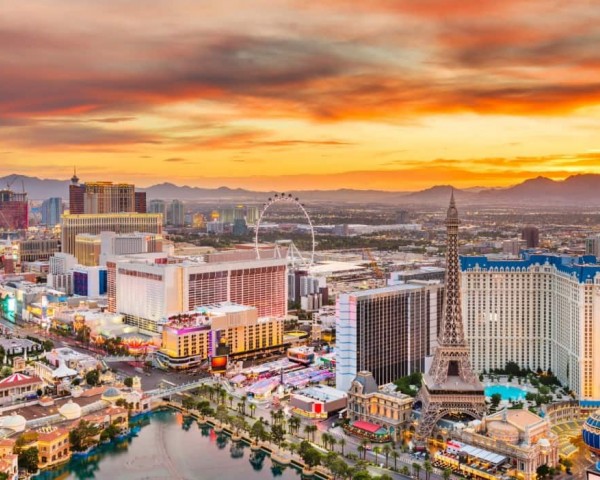Tourism in Las Vegas recorded a significant decline
Las Vegas, usually packed with tourists, is now seeing fewer faces, affecting both businesses and workers. The Las Vegas Convention and Visitors Authority (LVCVA) says total visitors are down 11.3% in June 2025 compared to last year, while international visitors are down even more at 13%.
Some are calling it the “Trump slump,” pointing to the Trump administration’s policies, such as tougher immigration and trade tariffs, as the reasons for the drop. With fewer guests in hotels, at conferences and on planes, those who work in Vegas are feeling miserable.
Tourist slowdown in Vegas
The LVCVA numbers for June 2025 are not encouraging, with about 3.1 million people coming to Vegas, up from 3.49 million a year earlier. International tourism, important to the city, fell by 13%. Canada, a major source of international visitors, saw significant declines, with Flair Airlines posting a 55% drop and Air Canada a 13.2% drop from May to June. Fewer trips from Mexico and Southern California are also evident. Hotel occupancy fell to 82.9% from 85.3% and convention attendance was lower, pointing to larger economic problems in a city that relies on tourism for a quarter of its jobs.
Impact of the “fall of Trump”
Hospitality workers and their union representatives believe that the Trump administration’s policies have directly caused these problems. Ted Pappageorge, who heads Culinary Workers Local 226, which represents 60,000 workers, noted that scaring away foreign visitors has had clear consequences. The union, whose members are 45% of immigrants, notes the growing concern of workers in connection with increased immigration control. Norma Torres, a DACA homemaker, faced cutbacks and job cuts while worrying about her future job and legal status in the U.S.
In addition, trade disagreements and changing tariff timelines have not helped relations with partners such as Canada. In addition, the proposed $250 visa “integrity fee” and $5,000 to $15,000 bond create financial and bureaucratic challenges for some visitors. As a result, some international visitors are choosing other destinations, such as Mexico, which is set to see an 11.6% increase in Canadian tourists in 2025.
Economic recession and workers’ struggles
Fewer tourists have a negative impact on Las Vegas workers, especially those who earn tips. About 180,000 workers in the area rely on tips, but fewer visitors have led to lower revenues. The tattoo artist told the Wall Street Journal that wages have dropped from $3,000 to $6,000 to $1,500 a month due to the absence of Canadian clients, who once made up 30% of his business. Layoffs at major resorts such as the MGM Grand and Fontainebleau, along with reduced hours for part-time employees, add to the volatility. Pappageorge said 25% of unionized resort workers work part-time, making them more vulnerable to recessions and seasonal shifts.
The larger US tourism industry is also suffering. The World Travel and Tourism Council (WTTC) predicts that spending by international visitors will decrease by $12.5 billion in 2025, from $181 billion to $169 billion, a 22.5% drop. WTTC President Julia Simpson warned that while other countries are welcoming visitors, the US is instead creating barriers, adding that recovery could take some time without efforts to restore confidence among travelers.
Tourism in Las Vegas is at a crossroads
The problems in Las Vegas reflect a larger national trend: The U.S. is running a $50 billion trade deficit as Americans spend more abroad than foreign visitors pay. Companies are responding with some discounts as a result of the current number of visitors. Brand USA America the Beautiful aims to rekindle interest in travel around the world, especially through carefully crafted promotions. However, significant cuts in funding, notably from $100 million to just $20 million, pose serious challenges to truly reversing current downward trends.
Moreover, the Culinary Workers Union is advocating a revised policy aimed at relaxing strict visa requirements and favoring lower tariffs. Their argument is that the hospitality sector, which includes 25% of the immigrant workforce in the state of Nevada alone, simply cannot operate effectively without truly inclusive policies. As Pappageorge emphasized, “this industry cannot function without immigrant workers,” thus highlighting how current immigration enforcement measures are negatively impacting both tourists and an important local workforce.
The way forward
The recent decline in tourism in Las Vegas should serve as a clear signal. To facilitate a sustainable recovery, various stakeholders are actively pushing for simplified visa procedures, strategic diplomatic initiatives aimed at rebuilding trust with international allies, and sustainable investment in critical tourism infrastructure. The upcoming 2026 FIFA World Cup, as well as the 2028 Olympics, present excellent opportunities for a significant rebound; however, this potential is largely dependent on the proactive enforcement of key policies that currently deter visitors. In the near future, Las Vegas must contend with a difficult recovery as workers and businesses feel the effects of declines directly related to national policy decisions.




Post Comment